Frequently Asked Questions
How do I get a motorcycle license in Arizona?
- A motorcycle license or endorsement is required to operate a motorcycle or motor-driven cycle. You must be at least 16 years of age to apply for a motorcycle license or endorsement.
- An applicant for a motorcycle license or endorsement who is under 18 must have held an Arizona instruction permit for at least six months.
- If you want to get your motorcycle license, our Basic Rider Course is for you. We provide everything; no permit required; this is an “I want to get my licenses course,” we supply everything to make that possible—bike, equipment, and fun included!
- Once you completed the course, we then give you the completion card to take to the MVD or third party to get your endorsement on the back of your license. No retest from the MVD is required.
What do I need to take with me to the MVD or third party to get my endorsement?
You must present documents showing your identity, legal presence in the U.S., and your age; such as a driver’s license, certified birth certificate, U.S. passport, permanent resident or resident alien card, certificate of naturalization or citizenship, military ID, or other similar documentation.
You must present a secondary document as well. Examples of secondary documents include non-enhanced driver’s licenses, Social Security cards, W-2 forms, professional licenses, or school IDs, among other credentials.
You will be required to show your completion card from MSF to verify you have successfully passed your course at an MVD-approved training facility. DO NOT LET THEM KEEP THIS CARD!
You must complete a Driver License / Identification Card Application.
Other things you should know:
- Arizona issues a motorcycle license valid until age 65.
- Your photo and eye test must be updated every 12 years.
- Drivers age 60 and older receive a license valid for five years.
- Temporary residents, such as out-of-state students and their family members or military personnel and their family members, may apply for a five-year license regardless of age.
- Licenses are issued by class: M for motorcycle, G for graduated, D for operator, and A, B, or C for commercial. If the class M license is combined with any other class of license, it will be added as an endorsement on the back of the current license.
- A Travel Motorcycle License is available in addition to the standard license.
Activate your AZ MVD Now account at azmvdnow.gov. It’s secure and personalized for you.
How do I obtain a motorcycle license only?
Refer to the previous question for more details. Additionally, you must complete the test for the rules of the road, if you have not done so.
What should I expect in an MSF Basic Rider Course?
Signing up for a Beginner (or Basic) Rider Course is a big step and you probably have some questions about what to expect. This is a generic description applicable to many programs. Be sure to study the website of the training course you are signing up with to learn more about their course specifics.
Pre-course Assignment:
- eCourse is the most up-to-date MSF Basic Rider Course (BRC). The eCourse is a three-hour assignment done on your own time and will prepare you for the riding and classroom. The number of times you can take the eCourse is unlimited. Being prepared will put you in the best position for success and relieve a lot of anxiety. Take notes and jot down specific questions you have.
- There will likely be students who have some previous experience, but the course is designed for people who have never ridden a motorcycle before. Do your homework and have fun; do not take yourself so seriousl you stop yourself from learning.
- It may be helpful to experience some pre-riding by sitting on a motorcycle and operating controls as you learn about them in your eCourse.
What should I bring to class?
- Bring your eCourse certificate or email it to trina@ridearizonamtc.com
- Snacks, lunch, and beverages as needed.
What should I wear to class?
Required Protective Riding Gear
(Saturday and Sunday range only)
You will be required to wear the following motorcycle riding gear for all on-cycle sessions. YOU WILL BE SENT HOME IF YOU ARE NOT PROPERLY DRESSED AND NO REFUNDS WILL BE ISSUED.
- Helmet. Your helmet must meet DOT standards and be in excellent condition. If you do not have a helmet or yours does not meet the standards, Ride Arizona Motorcycle Training Centers will provide one for use during the course.
- Gloves. Your gloves must be full-fingered.
- Eye protection. You must wear adequate eye protection such as glasses, goggles, or a face shield on your helmet.
- Long-sleeved shirt and/or jacket. You must wear a shirt or jacket with sleeves to cover and protect your arms.
- Sturdy, long-legged pants such as jeans. You must wear pants made of sturdy fabric to provide protection. You may not wear sweats, tights, or similar.
- Boots or over-the-ankle shoes. Your footwear must be adequate to protect your feet, cover your ankles, be free from dangling straps or laces, and provide support and protection. You may not wear high heels, platforms, or canvas shoes.
What is the class structure?
The class structure depends upon the weather.
Riding Only
It is important to arrive ON TIME. There is a lot to cover in this compact course and stragglers delay the start for everyone.
Day One Classroom
- Sign a liability waiver for riding a motorcycle and COVID-19, complete the sign-in sheet, and read and accept the Terms and Conditions.
- Discussion of risk and basic operation. (Since you already completed the pre-course assignment, a lot of this will be reviewed.
Day One Riding
First exercise
- Learn about the controls.
- Mount and dismount the motorcycle you will be riding.
- Get a feel for moving the bike around without the motor running.
- Learn how to start and stop the engine.
Second exercise
Most exercises have a “simulated practice” where you will go through the physical motions needed to perform a skill without the motor running. Once you become comfortable with the skill, you can practice.
- With the engine running, get a feel for using the manually operated clutch and transmission.
- Practice riding in a straight line, braking, shifting gears, and learning basic cornering skills.
Day Two Riding
- Practice with slow speed maneuvers, braking in curves, decisions making to merge into traffic, and swerving, as well as exercises designed to increase cornering competence.
- Evaluation (riding test)
The riding test is often the most stressful part of the course. But, if you were able to successfully complete the exercises, you should be able to pass the evaluation. If you do not pass, you will be able to retest. If that did not go well, then take this as an opportunity to reevaluate whether motorcycling is a good fit for you or come back for another class, which can make all the difference in the world.
At the end of the course, the RiderCoaches will debrief each person and hand out completion cards as well as gifts such as discounts or in-store credit at local dealerships.
What are the prerequisites for the Basic Rider Course?
When you sign up for the BRC, you will receive an eCourse. The eCourse provides valuable information about what to expect and what we will be doing during the riding portion of the course. It serves as your knowledge test, classroom portion, and to show what we’re going to do during the course.
What course offers the motorcycle endorsement?
- BRC – Upons successful completion you will receive the MSF Completion Card, which waives the AZMVD testing requirement.
- BRC2 – you will need your own motorcycle and a permit that will allow skill testing at the end of the class. Upon completion, you will receive an MSF Completion Card to waive the skill test.
Once I complete this course do I have to take a test at MVD?
No, but you must successfully pass either the BRC or BRC2 skill test to receive a test waiver for the AZ MVD.
If I am an out-of-state resident, can I still take the course?
If you plan to apply for an Arizona driver’s license, you can transfer your driver license to AZ upon completion of the course.
If you plan to keep your out-of-state license, you should contact your state’s MVD to find out what is required.
What types of motorcycles are provided?
125 – 300cc
Standard, cruiser, sport, and dual-purpose motorcycles.
May I bring my own motorcycle?
Yes.
Will the completion card be accepted by another state?
This will depend upon your state’s regulations, it’s best to call your home state MVD to find out.
I am under the age of 18, what do I need to know?
You must have your parent or legal guardian sign the waiver and have it notarized or have your parent or guardian sign the waiver at time of class in front of a RiderCoach before you will be permitted to take in the course.
After successful completion of the course, you will receive an MSF Completion Card that you will show the MVD to receive a permit and then again to receive the endorsement after six months.
You will be required to hold a permit for at least six months or turn 18 before you will be eligible to receive your endorsement.
What if I fail the class?
Sometimes that happens and it’s okay, we will retest you. If for some reason it does not go well on the second try, we may suggest private coaching or taking the class again to get better at riding a motorcycle. Remember riding is not be for everyone.
How do I choose the best class for me?
If you’re a new rider and have never ridden a motorcycle, then taking the Basic Rider Course is what you need for a basic foundation.
If you have your own motorcycle and a permit, then Basic Rider Course 2 might be a good option, but it does not provide the fundamentals you receive in BRC.




